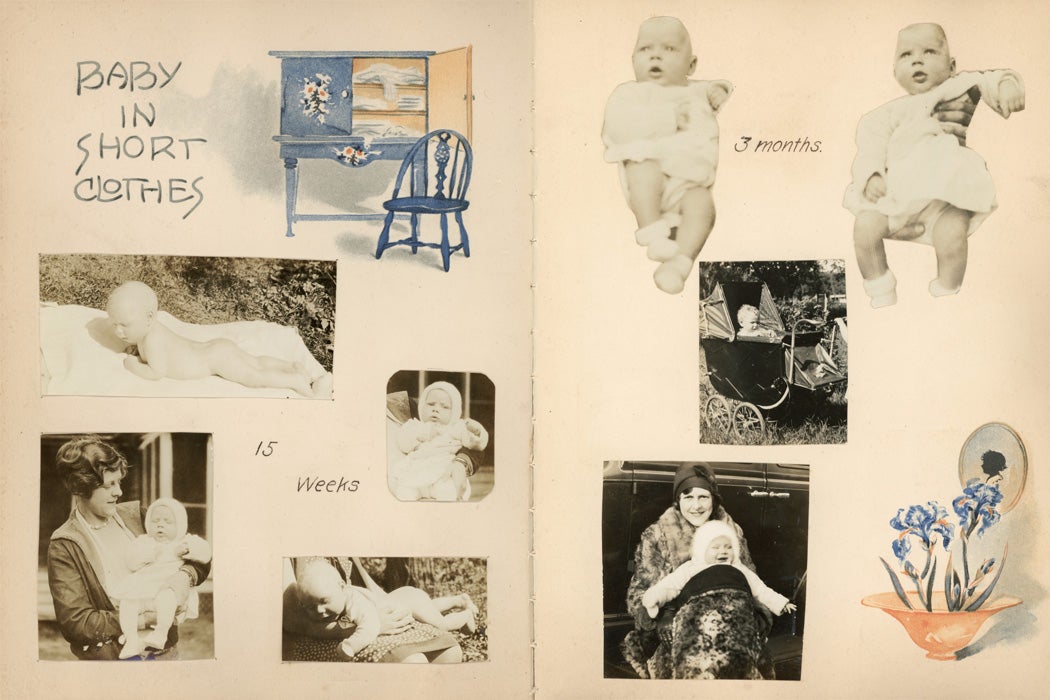Your childhood heirlooms may include a small book devoted to a small person—baby you. For over a century, baby books were a way for mothers to lovingly record their baby’s birth and first memorable days. Janet Golden and Lynn Weiner tell the story of the tender documents, what they tell us about past infants, and how useful they are as a record of daily life.
The emergence of the baby book coincided with changes in infant mortality and cultural expectations of motherhood. Women could buy fancy baby books or use ones provided by insurance companies or purveyors of infant products. These books were chock full of health advice and communicated it as expectations for mothers, such as immunizing their children against childhood diseases like diphtheria and tetanus.
“The cultural practice of recording an infant’s life in a baby look merged seamlessly with the public health command to record growth, development and medical care,” Golden and Weiner write. Mothers were encouraged to weigh, measure, and document their children’s milestones—and along the way, they write, baby books that had once existed as a record of the gifts given to newborns “became primers in infant care and mass consumption.”
As public health standards rose, so did advertising. The books telegraphed maternal expectations, including the paramount need for a properly outfitted nursery and perfect diet for baby. In the late nineteenth and early twentieth centuries, mothers recorded their babies’ accidents and their attempts to discipline them. But as the emerging field of child psychology emphasized infancy as a critical juncture of development, the focus changed. And mothers recorded their attempts to conform to these new concepts of modern motherhood—some of which ended in failure.
Weekly Newsletter
Golden and Weiner emphasize baby books as troves of fascinating and telling historical detail, from “wonderfully detailed descriptions of illness (and death)” to family trees, religious information, and detailed lists of everything from babies’ Christmases to their bank accounts. “Baby books remind us that babies had a history,” they write. That history was embedded in cultural expectations and practices, and touched by parents, institutions, and corporations. Baby books document “rising expectations” that came about as the number of infant deaths decreased, and they show mothers’ embrace, or denial, of those expectations. They also represent what Golden and Weiner call a “neglected source,” a counterpoint to hospital records, advertisements, and other documents.
Today, baby books have been largely supplanted by social media, where parents and caretakers document children’s births and milestones. In an age of “sharenting,” many babies make their online debuts before they’ve even left the womb in the form of sonogram photos and photos of baby bumps. It’s important to document those online baby book equivalents, Golden and Weiner write—a move that will allow future historians to better understand the lives of babies and their caretakers today.







